The Least Friendly Dog Breeds: A Comprehensive Overview
When considering dog breeds, many prospective pet owners wonder about temperament. Some breeds are known for their friendly disposition, while others tend to be more reserved or unfriendly. Understanding which breeds fall into the latter category can help you make informed choices when selecting a companion. Here’s a closer look at some of the least friendly dog breeds based on behavioral traits and temperament.
Understanding Dog Behavior
Before delving into specific breeds, it’s essential to grasp what makes a dog seem unfriendly. Factors such as genetics, environment, training, and socialization greatly influence a dog’s behavior. While some breeds are predisposed to wariness or aggression, individual dogs may still vary widely in personality. That said, here are some breeds known for being less than friendly:
Least Friendly Dog Breeds
- Chow Chow – With their lion-like appearance and aloof demeanor, Chow Chows are often cool towards strangers. They are fiercely loyal to their families but can be standoffish.
- Shar Pei – Recognized for their wrinkled faces, Shar Peis can be wary of new people. They require proper training to overcome their natural suspicion of others.
- Akita – This strong and independent breed can be protective and assertive. While they bond closely with their owners, they can be less amiable toward unfamiliar individuals.
- Rottweiler – Rottweilers are powerful and loyal, often used as guard dogs. Without proper training, they can exhibit aggressive behavior, especially towards strangers.
- Jack Russell Terrier – Although small, this breed can have a feisty attitude and may not always welcome new visitors. Training and socialization are imperative for a balanced temperament.
- Terrier Breeds – Many terriers, including the Bull Terrier and Fox Terrier, can be territorial and sometimes unfriendly. They tend to have high energy levels that may lead to aggressive play if not managed properly.
Factors Influencing Dog Friendliness
Understanding that not all dogs of a given breed will be unfriendly is crucial. Various factors can influence a dog’s behavior:
- Socialization: Early exposure to different people and environments encourages friendly behavior. Dogs that are not socialized properly may be more reserved or aggressive.
- Training: Proper training from a young age helps develop a well-behaved and friendly dog. Negative experiences during training can instill fear or aggression.
- Genetics: Some breeds have inherent tendencies but individual personalities can differ. Responsible breeding practices can help reduce negative traits.
- Environment: The environment in which a dog lives, including family dynamics and daily routines, can affect its behavior. Dogs raised in nurturing homes are more likely to be friendly.
Dealing with Less Friendly Breeds
If you find yourself with a breed known for being less friendly, it’s important to take proactive measures:
- Invest time in socializing your dog from a young age. This will help them become more comfortable around strangers.
- Be consistent with training and reinforce positive behavior. Employ rewards like treats and praise.
- Expose your dog to various situations to help them acclimate and reduce fear or aggression.
- Seek professional help if necessary. A dog trainer or behaviorist can provide tailored guidance on improving your dog’s temperament.
Resources for Dog Owners
Gaining insight into dog behavior and training is key for managing any canine companion effectively. Check out these resources for more information:
American Kennel Club (AKC) – A go-to resource for dog owners, providing education about breeds, training, and health.
ASPCA – Offers a wealth of information on pet care and training techniques to improve pet behavior.
PetMD – An informative platform for understanding various health and behavioral issues in dogs.
By recognizing that some dog breeds may possess less friendly traits, you can better prepare yourself for the responsibilities of dog ownership. Always remember that no matter the breed, with love, proper socialization, and training, even the least friendly dogs can show a softer side.
Factors Contributing to Canine Aggression
Understanding the elements that lead to canine aggression is essential for dog owners, trainers, and pet enthusiasts alike. Various factors can influence a dog’s behavior, turning them from gentle companions into aggressive individuals. Let’s explore these factors in detail to better grasp why some dogs exhibit aggressive traits.
Genetics and Breed Characteristics
Some dog breeds are genetically predisposed to aggression. This doesn’t mean that all dogs of a certain breed will be aggressive, but certain traits can be more prevalent. For example:
- Working Dogs: Breeds like Rottweilers and German Shepherds were bred for protection and can display aggressive behavior if not properly trained.
- Territorial Breeds: Dogs such as Bull Terriers may show aggression to protect their home and family.
- Herding Breeds: Certain breeds have strong instincts to herd, which can sometimes manifest as aggressive behavior toward perceived threats.
Early Socialization
A dog’s early experiences play a significant role in their temperament. Positive socialization during puppyhood can help mitigate aggressive tendencies. Key points include:
- Puppy Classes: Enrolling your puppy in classes helps expose them to new people and other animals, promoting adaptability.
- Exposure to Environments: Carefully introducing puppies to various settings can decrease fear-induced aggression in adulthood.
Training and Environment
Improper training techniques and harsh environments can trigger aggressive behavior. Consider the following:
- Negative Reinforcement: Using punishment-based training can lead to fear and defensiveness in dogs, causing aggression.
- Stressful Living Conditions: A chaotic or abusive home life can greatly impact a dog’s mental state, potentially leading to aggression.
- Lack of Structure: Dogs thrive on routine. An unstructured home may lead to anxiety or insecurity, resulting in aggressive behavior.
Health Issues
Physical health problems can also result in changes in behavior. Here are some health-related factors that may contribute to aggression:
- Pain or Illness: Dogs in pain may react defensively when touched or approached. Common sources of pain include dental issues or arthritis.
- Neurological Conditions: Disorders affecting the brain, such as seizures or tumors, can cause sudden changes in behavior.
- Hormonal Imbalances: Conditions related to hormone levels can affect how dogs react to stimuli, sometimes resulting in aggression.
Fear and Anxiety
Fear is one of the leading causes of canine aggression. Dogs may bite or growl defensively when they feel threatened. Factors contributing to fear-based aggression include:
- Past Trauma: A history of abuse or neglect can make dogs fearful and more likely to exhibit aggression.
- New Experiences: Sudden changes in routine or environment can trigger anxiety in dogs, leading to aggressive displays.
Owner Influence
The behavior and demeanor of the dog owner significantly impact the dog’s temperament. For instance:
- Lack of Training: Owners who do not engage in training can breed confusion and anxiety in their dogs.
- Owner’s Own Behavior: A nervous or aggressive owner may inadvertently foment similar feelings in their dog, heightening aggressive tendencies.
Thoughts
While there are many contributing factors that can lead to canine aggression, it is crucial to remember that most dogs are inherently friendly and loving. Understanding these factors can help prevent aggressive behaviors and improve the overall relationship between humans and dogs.
For further reading on canine behavior and aggression, consider visiting these resources:
In addressing canine aggression, knowledge and patience are your best tools. Learning about these factors empowers you as an owner to foster a more harmonious environment for your dog and your family.
Training Tips for Managing Unfriendly Dogs
When dealing with dogs that showcase unfriendly behavior, effective training is key to fostering a well-adjusted pet. Whether it’s aggression towards other dogs, humans, or even territorial behavior at home, understanding how to manage and train such unfriendly dogs can make a significant difference in their demeanor. Here are some essential tips to help you navigate this journey.
Understanding Unfriendly Behavior
It’s crucial to comprehend why a dog may exhibit unfriendly behaviors. Factors can include lack of socialization, fear, or even past traumatic experiences. By identifying the root cause, you can better tailor your training approach. Keep an eye out for signs like growling, showing teeth, or posturing, which indicate that a dog is uncomfortable and may react unfriendly.
Socialization is Key
An important aspect of training unfriendly dogs is socialization. Here are steps to effectively socialize your dog:
- Start Early: If your dog is a puppy, begin socializing as soon as possible.
- Controlled Environments: Introduce your dog to various people and pets in a controlled setting.
- Positive Reinforcement: Reward your dog with treats or praise for calm interactions with others.
Implement Basic Training Commands
Teaching basic commands is fundamental for untrained or unfriendly dogs. Start with these:
- Sit: Helps to control their excitement during interactions.
- Stay: Useful when meeting new people or dogs.
- Come: Vital for recall, particularly in stressful situations.
Using positive reinforcement techniques, such as treats or praise, encourages good behavior. Consistency is essential; ensure that everyone interacting with the dog uses the same commands.
Use Desensitization Techniques
Desensitizing your dog to triggers is a useful strategy. Here’s how:
- Identify Triggers: Understand what causes your dog to act unfriendly. It could be other dogs, loud noises, or unfamiliar people.
- Gradual Exposure: Slowly introduce your dog to these triggers, starting at a distance where they feel comfortable.
- Reinforcement: Reward your dog for remaining calm when exposed to the trigger. Gradually decrease the distance as they improve.
Working with Professional Trainers
If the behavior proves challenging to manage, seeking help from a professional dog trainer or behaviorist might be necessary. Professionals can provide insights tailored to your dog’s needs. Also, consider checking resources from the American Kennel Club (AKC) and the Cesar Millan Foundation, which offer valuable advice and support for dog owners.
Creating a Safe Space
Your dog deserves a safe and comfortable space where they can retreat when feeling overwhelmed. This area can be a designated room or a crate decorated with blankets and favorite toys. Make sure this space is quiet and away from the hustle and bustle.
Managing Aggression
If your dog exhibits aggressive behavior, here’s a structured approach to help:
- Seek Help: Reach out to with a trainer experienced in aggressive dogs.
- Behavior Logs: Keep a record of when behaviors occur for better understanding.
- Behavior Modification: Use techniques like counter-conditioning to change emotional responses.
Practice Patience
Training an unfriendly dog requires patience. Remember, progress can be slow, and consistency is vital. Celebrate small victories along the way. This journey can take time, so maintaining a positive attitude will benefit both you and your dog.
Whether your dog is unfriendly due to fear or lack of socialization, these tips are designed to help you navigate their training effectively. Always consult with professionals when needed, and don’t hesitate to seek out community resources and support. With love, patience, and the right techniques, you can guide your dog to become a friendly and well-adjusted companion.
The Importance of Socialization in Early Dog Development
Early socialization is a critical phase in the life of a dog. It significantly influences their future behavior and temperament. During the first few months of life, social experiences shape the dog’s personality, making early socialization vital.
Dogs are naturally social creatures. They thrive on interaction with other animals and humans. If a dog is not properly exposed to new experiences, they may develop behavioral issues later in life. These may include fear, aggression, and anxiety. Understanding the importance of socialization can help you raise a well-adjusted and friendly companion.
Socialization involves exposing your dog to various people, environments, sounds, and experiences. The critical window for socialization is between 3 and 14 weeks. During this time, puppies are most receptive to new experiences. After this window closes, the dog may become more cautious of unfamiliar situations.
A well-socialized dog typically displays the following traits:
- Friendly towards strangers and other pets
- Curious about new experiences
- Comfortable in different environments
- Less prone to fear and anxiety
There are several effective methods to socialize your puppy:
-
Puppy Classes:
These classes offer a controlled environment where puppies can interact with one another. Trainers guide the sessions, teaching important commands and behaviors while ensuring all interactions are positive. -
Controlled Exposure:
Taking your puppy for walks in busy areas or parks helps them experience different sights, sounds, and smells. Always make sure these experiences are positive and not overwhelming. -
Playdates:
Organizing playdates with other vaccinated puppies can provide valuable socialization. Choose puppies of similar age and temperament to ensure a fun experience. -
Meeting Different People:
Expose your dog to various people: men, women, children, and older adults. This helps them become comfortable around individuals of all ages and backgrounds.
While socializing, always observe your dog’s reactions. If they seem anxious or afraid, take a step back and let them acclimatize at their own pace. Never force your puppy into uncomfortable situations, as this can lead to negative experiences.
Positive reinforcement is key. Reward your dog with praise or treats for calm and friendly behavior during new experiences. This helps them associate new situations with positive outcomes, which increases their confidence.
Socialization doesn’t stop after puppyhood; it’s an ongoing process. Adult dogs also benefit from regular exposure to new experiences and environments. Regular walks, visiting dog parks, and participating in dog-friendly events can help maintain their social skills.
The consequences of failing to socialize a dog can be severe. Unsocialized dogs are more likely to develop behavioral problems. They may become fearful or aggressive, which can pose risks to other animals and people. In extreme cases, poor socialization can lead to relinquishment or abandonment by owners who are unable to handle their dog’s behavior.
According to the American Kennel Club (AKC), socialization can also improve your dog’s overall quality of life. They are more likely to enjoy outings, travel, and other activities when they are comfortable around new people and environments. A well-socialized dog is a happy dog.
For tips on socializing your puppy effectively, consider visiting the American Kennel Club or checking out resources from The Humane Society. Both organizations provide invaluable guidance on dog training and socialization.
| Socialization Benefits | Description |
|---|---|
| Improved Behavior | Less likelihood of fear or aggression towards others. |
| Increased Confidence | More relaxed in various situations, spaces, and environments. |
| Positive Interactions | Friendlier towards people and other animals. |
| Better Adaptability | Willingness to explore new places and activities without fear. |
Early socialization is crucial in shaping a dog’s future behavior. Investing time in socializing your dog can lead to a happy, healthy, and well-adjusted pet, making life more enjoyable for both you and your furry companion.
Understanding Dog Behaviors: Signs of Aggression or Fear
Understanding dog behaviors can be crucial to ensuring a safe and harmonious environment for both pets and humans. Dogs, like any other animal, communicate primarily through body language, vocalizations, and overall demeanor. By recognizing the signs of aggression or fear, you can manage your dog’s behavior more effectively.
Common Signs of Aggression in Dogs
Aggression in dogs can manifest in various ways. Recognizing these signs early can help you prevent potential incidents. Here are some common signs to watch out for:
- Growling or Snarling: This vocalization is a clear warning. Either behavior indicates that the dog feels threatened or uncomfortable.
- Baring Teeth: When a dog shows its teeth, it’s a way of displaying dominance. This is usually followed by other aggressive behaviors.
- Stiff Body Language: An aggressive dog might stand tall with a rigid posture, signaling readiness to defend.
- Barking: While barking can mean many things, aggressive barking is often deep and repetitive.
- Direct Eye Contact: A dog that stares intensely might be asserting dominance or challenging you.
- Lunging or Snapping: Sudden movements towards a person or another dog can signify aggressive behavior.
Common Signs of Fear in Dogs
Fear can also result in aggressive behavior, and understanding your dog’s body language is key. Here are some signs that your dog may be feeling scared:
- Cowering or Shrinking: A scared dog will often lower its body and may try to make itself smaller.
- Tucked Tail: A tail that is tucked between the legs is a classic sign of fear.
- Whining or Whimpering: Vocalizations like whining can indicate that a dog is feeling anxious or fearful.
- Averting Gaze: If your dog avoids eye contact, it’s often trying to show submission or that it feels uneasy.
- Panting: Dogs may pant for various reasons, but excessive panting, especially when not hot, can indicate stress or fear.
- Seeking Hiding Places: If your dog wants to hide behind furniture or under beds, it may be feeling overwhelmed.
Understanding Triggers
Every dog is unique, and their triggers for aggression or fear can vary widely. Some common triggers include:
- Loud noises (thunder, fireworks)
- Strange or unexpected movements
- New environments or changes in routine
- Other animals, especially those they perceive as threats
How to Respond to Aggressive or Fearful Behavior
Reacting appropriately to a dog’s aggressive or fearful behavior can help improve the situation. Here are some useful steps:
- Stay Calm: Your calm demeanor can help reassure your dog. They can sense your emotions, so remaining composed is vital.
- Avoid Direct Eye Contact: For a fearful dog, avoid staring. Instead, use soft body language to show you mean no harm.
- Give Them Space: Allowing your dog to retreat when they feel threatened can help reduce their anxiety.
- Use Positive Reinforcement: Reward calm behavior to encourage non-aggressive responses in the future.
Training and Professional Help
If you find that your dog shows consistent signs of aggression or fear, consider working with a professional dog trainer or behaviorist. Tools and techniques they employ can include:
- Desensitization to triggers
- Counter-conditioning to create positive associations
- Basic obedience training to enhance control
For further reading and resources, you can check out the American Kennel Club and ASPCA’s resources on aggression.
Understanding your dog’s emotions and reactions is the first step to ensuring a safe and happy relationship. By observing body language and learning about typical signs of aggression and fear, you can help your pet feel secure and relaxed in various situations.
Choosing the Right Dog for Your Lifestyle: Assessing Temperament
When it comes to bringing a dog into your home, choosing the right breed that aligns with your lifestyle is crucial. Dogs come with various temperaments, and understanding these can significantly influence your relationship with your furry friend.
Each breed has its distinct personality traits. Some dogs are naturally more friendly, while others may be reserved or standoffish. Before deciding on a breed, consider your daily routine, your home environment, and how much time you can dedicate to your new pet.
First, assess your lifestyle. Are you a busy professional who works long hours? Do you have small children? Or perhaps you live in an apartment with limited space? Knowing the characteristics of different breeds can make a big difference in your decision. Here are a few factors to consider:
- Energy Level: Think about how active you are. Some breeds require daily exercise, while others are more laid-back.
- Living Space: Your home size matters. Large breeds often need more space to move around compared to smaller ones.
- Allergies: If you or someone in your household has allergies, consider hypoallergenic breeds.
- Children and Other Pets: Some breeds are known for being great with kids, while others may not be as tolerant.
Once you’ve evaluated your lifestyle, it helps to learn more about the temperament of various breeds. A dog’s behavior can often be linked to their breed’s genetic predispositions. Here are a few breeds known for their distinct personalities:
| Breed | Temperament |
|---|---|
| Labrador Retriever | Friendly, outgoing, and good with children |
| Chihuahua | Alert, energetic, and may be wary of strangers |
| German Shepherd | Intelligent, loyal, but can be protective |
| Boston Terrier | Amiable, playful, and good with other pets |
| Akita | Independent, reserved, and can be aloof with strangers |
Understanding the distinction between affectionate and aloof breeds can help you find the right fit. For instance, if you are looking for a dog that will play with your children, a Labrador might be perfect. However, if you prefer a more independent canine companion, you might consider a breed like the Akita, which is known to have a more reserved demeanor.
It’s also important to remember that temperament can vary even within breeds. Factors such as socialization, training, and environment play a significant role in shaping a dog’s personality. Early exposure to new experiences, people, and other animals can lead to a well-adjusted dog.
Local shelters often have mixed breeds that may blend characteristics of different breeds. These dogs can offer wonderful companionship and may fit better in your home environment. Take your time when adopting or purchasing a dog. Spending time with the animal before making the commitment allows you to observe its behavior and temperament.
If you are unsure about the best breed for you, consider consulting resources at sites such as the American Kennel Club or the Humane Society. They offer guidance and information on various breeds and temperament traits.
Ultimately, the goal is to find a dog whose temperament complements your lifestyle. Whether you prefer a low-energy companion to snuggle with on the couch, or an energetic playmate to accompany you on adventures, the right choice can lead to a fulfilling and loving bond.
Taking the time to assess these attributes can result in a more harmonious and enjoyable experience for both you and your new dog.
The Role of Breed vs. Environment in Dog Friendliness
When considering a dog’s temperament, many people wonder how much of it comes from the breed and how much is shaped by the environment in which the dog is raised. Understanding the nuances between breed characteristics and environmental influences can provide valuable insights into dog friendliness, helping potential dog owners make informed decisions.
The Influence of Dog Breed
Dog breeds have distinct traits and behaviors that are often passed down through generations. Here are some points to consider:
- Genetic predisposition: Certain breeds are known for specific characteristics. For example, herding breeds like Border Collies may display more intense behaviors than breeds known for being companion animals, such as Cavalier King Charles Spaniels.
- Temperament differences: Breeds like Rottweilers and Doberman Pinschers can often be perceived as less friendly due to their guarding instincts. However, these traits don’t make them inherently aggressive; it is all about how they are trained and socialized.
Socialization from a Young Age
The early experiences a dog has during their formative months are crucial for their friendliness. Exposure to different environments, people, and animals shapes their reactions in various situations. Socialization often helps dogs learn to behave positively around strangers and other pets.
Understanding the importance of socialization can help potential dog owners foster friendly behaviors in their pets. A dog that is well-socialized is likely to be more comfortable in different settings.
Environmental Factors Impacting Friendliness
While breed characteristics are significant, environmental factors play an equally important role in shaping a dog’s behavior. Here are several key elements:
- Living conditions: Dogs raised in homes with attentive owners who provide love, attention, and guidance are more likely to be friendly. In contrast, dogs that face neglect or poor treatment may develop anxiety or aggression.
- Training methods: Positive reinforcement training encourages good behavior and strengthens the bond between a dog and their owner. Reactive or punishment-based training can lead to fear and aggression, impacting the friendliness of a dog.
Individual Personality vs. Breed Traits
It’s important to note that individual temperament can vary greatly even within the same breed. Some dogs are naturally prone to more social behavior, while others may be more reserved. Here’s a quick overview:
| Breed | Common Temperament |
|---|---|
| Labrador Retriever | Friendly, outgoing |
| Chihuahua | Alert, reserved |
| German Shepherd | Loyal, protective |
| Pit Bull | Affectionate, loyal |
Training Techniques to Enhance Friendliness
Implementing effective training techniques can greatly increase a dog’s friendliness. Here are some strategies:
- Positive reinforcement: Rewarding desired behaviors with treats or praise encourages dogs to repeat those behaviors.
- Consistency: Establishing a routine helps dogs understand expectations, fostering a more secure and friendly demeanor.
- Regular socialization: Exposing your dog to new experiences, such as parks or dog-friendly events, helps them become well-adjusted and friendly.
The degree of friendliness a dog shows is influenced by a combination of breed traits and environmental factors. Understanding both aspects allows for better preparation and expectations. Whether you’re considering a specific breed or adopting a mixed breed, socialization and positive training will be key in nurturing a friendly companion.
For additional information about dog breeds and behavior, you can visit American Kennel Club or explore resources on dog training at Paws Corner.
Key Takeaway:
When considering the least friendly dog breeds, it’s important to recognize that individual temperament often varies widely regardless of breed. The article provides a detailed overview of several dog breeds known for their unfriendly tendencies, such as the Rottweiler, Chow Chow, and Akita. However, understanding that aggression is influenced by a multitude of factors is crucial.
One of the primary factors contributing to canine aggression is lack of proper training and socialization. Dogs that have not been adequately socialized may react with fear or hostility in unknown situations or when encountering new people and animals. Consequently, early training and positive experiences are essential in shaping a dog’s behavior and attitude towards others.
To manage dogs that exhibit unfriendly behavior, the article emphasizes specific training tips. Consistent training, positive reinforcement, and patience are key strategies in modifying a dog’s behavior. Teaching commands like “sit” and “stay” can help establish a level of control, while rewarding good behavior reinforces positive interactions.
Socialization, particularly during a dog’s critical development phases, is also outlined as a vital component. Exposing dogs to various environments, people, and other animals can facilitate more positive future interactions. Establishing a friendly demeanor often starts in puppyhood, where experiences help mold their behavior as they grow.
Understanding dog behaviors is equally important. Signs of aggression or fear, such as growling, raised hackles, or tail tucking, can help owners navigate a dog’s state of mind, aiding in appropriate management strategies.
Choosing the right dog for your lifestyle is another highlight. Assessing a dog’s temperament before bringing one home ensures compatibility with your environment and family dynamics. the article emphasizes the balance between breed characteristics and environmental influences on dog friendliness. While certain breeds may have traits that lend themselves to less friendly behavior, responsible ownership, proper training, and a supportive environment play a significant role in shaping a dog’s behavior.
By understanding these various aspects, dog owners can foster a harmonious relationship with their pets, whether they are among the least friendly breeds or not.
Conclusion
Finding the right dog for your home and lifestyle is crucial, particularly when considering friendliness and temperament. Throughout this article, we explored the least friendly dog breeds, shedding light on the factors that contribute to canine aggression. It’s important to recognize that breed alone does not determine a dog’s friendliness. Environmental factors and individual experiences play a significant role as well.
Proper training and early socialization can significantly enhance a dog’s behavior. Understanding the signs of aggression or fear can help you manage an unfriendly dog while fostering a positive environment. Engaging in consistent training practices not only improves behavior but strengthens the bond between you and your canine companion.
Before choosing a dog, take the time to assess its temperament to ensure it aligns with your lifestyle. A deep understanding of your prospective pet’s needs will pave the way for a harmonious living situation. Remember, both the breed and its environment shape a dog’s friendliness.
By considering all these elements—breed characteristics, environmental impacts, training, and socialization—you can make informed decisions. Whether you are drawn to a specific breed or seeking a more laid-back companion, prioritizing compatibility can lead to a rewarding, loving relationship with your dog. Embrace the responsibility of being a thoughtful pet owner, and your journey with your dog will be all the more fulfilling.

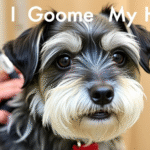
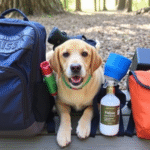
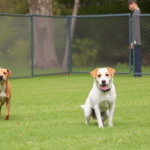
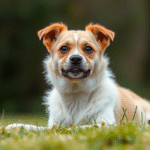
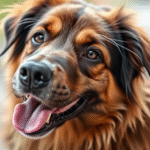

Leave a Reply